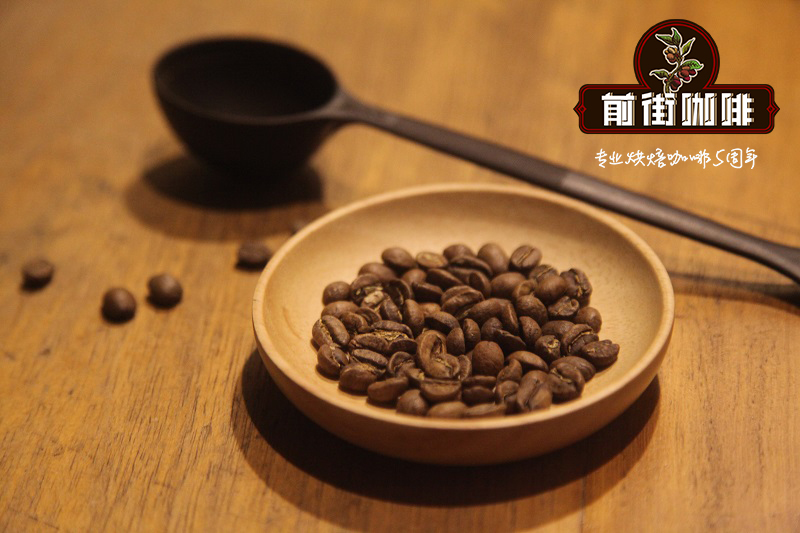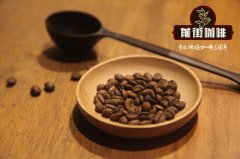New Guinea Coffee beans taste less developed country Papua New Guinea Coffee Story

Professional coffee knowledge exchange more coffee bean information please follow the coffee workshop (Wechat official account cafe_style)
Qianjie-introduction to Papua New Guinea Coffee
The island of New Guinea was colonized by the Netherlands, Germany, Britain, Japan, Australia and other countries from the 18th century to the 19th century. In 1961, the western half of the island became an Indonesian dependency, while the eastern half became independent from Australia in 1975, becoming the present-day "Papua New Guinea PAPUA NEW GUINEA", abbreviated as PNG.
Papua New Guinea, where most people can't even pronounce their names, is a very diverse country with more than 800 different languages and one of the least developed countries in the world. Most Highland tribes did not even come into contact with whites before 1930 because few people explored PNG, and PNG is now an area full of Western influence and aboriginal traditions.
The commercial production of coffee in Papua New Guinea began in the 20th century, the Jamaican Blue Mountain species belonging to the Ironka family was introduced from Jamaica in 1931, bourbon was introduced from Kenya in 1950, and moved to the New World and Kaddura from Brazil in 1962. Since then the quality of coffee beans has made a great leap forward.
Until the government encouraged open cultivation in the 1950s, the coffee industry grew greatly in the 1970s and 1980s and became an important product export of PNG today. At that time, most of the coffee production came from 18 large estates, which still remain in Papua New Guinea, but account for only 15% of the total production. At present, most of the coffee bean production comes from coffee produced by small farmers in their own coffee garden (garden). The coffee grown in small farmers' coffee gardens may range from dozens to hundreds, and the yield of raw coffee beans can range from 25 to 65 kilograms.
Despite the good environment, the coffee beans of Papua New Guinea currently have a low global market share of only 0.7%. Coffee is very important to Papua New Guinea and is the only cash crop in the highlands. 40 per cent or more than 2 million smallholder families in the country depend on coffee beans and are a very important source of livelihood.
Coffee beans in Papua New Guinea are mostly grown in the highlands, and the proportion of Arabica is as high as 95%. The main varieties are Tyoica, Arusha, Bourbon, Kaddura and Mundo Novo.
The coffee style of Papua New Guinea has full grains, moderate acidity, mellow and varied taste, pleasant acidity and fruit-like sweetness.
In short: Qianjie is a coffee research hall, happy to share the knowledge about coffee with you, we share unreservedly just to make more friends fall in love with coffee, and there will be three low-discount coffee activities every month. The reason is that Qianjie wants to make more friends drink the best coffee at the lowest price, which has been Qianjie's tenet for 6 years!
END
Important Notice :
前街咖啡 FrontStreet Coffee has moved to new addredd:
FrontStreet Coffee Address: 315,Donghua East Road,GuangZhou
Tel:020 38364473
- Prev

Where is the coffee from Papua New Guinea? introduction to the flavor of Papua New Guinea coffee.
Professional coffee knowledge exchange more coffee bean information please follow the coffee workshop (Wechat official account cafe_style) front street-when introducing coffee to Papua New Guinea, the most frequently introduced beans are basically from Asia, Africa, Central and South America. People often mislead people into thinking that these three continents are the only coffee producers in the world. In fact, Oceania also has a place in more than 70 coffee-producing countries.
- Next

What is png? new stimulation of taste buds of png coffee beans in Papua New Guinea
Professional coffee knowledge exchange more coffee bean information please follow the coffee workshop (Wechat official account cafe_style) front street-Papua New Guinea PNG Coffee introduction Papua New Guinea many people think of Papua New Guinea (hereinafter referred to as PNG) coffee must think it will be similar to Indonesian coffee, but in fact they are completely different. When PNG's coffee was grown,
Related
- Beginners will see the "Coffee pull flower" guide!
- What is the difference between ice blog purified milk and ordinary milk coffee?
- Why is the Philippines the largest producer of crops in Liberia?
- For coffee extraction, should the fine powder be retained?
- How does extracted espresso fill pressed powder? How much strength does it take to press the powder?
- How to make jasmine cold extract coffee? Is the jasmine + latte good?
- Will this little toy really make the coffee taste better? How does Lily Drip affect coffee extraction?
- Will the action of slapping the filter cup also affect coffee extraction?
- What's the difference between powder-to-water ratio and powder-to-liquid ratio?
- What is the Ethiopian local species? What does it have to do with Heirloom native species?

